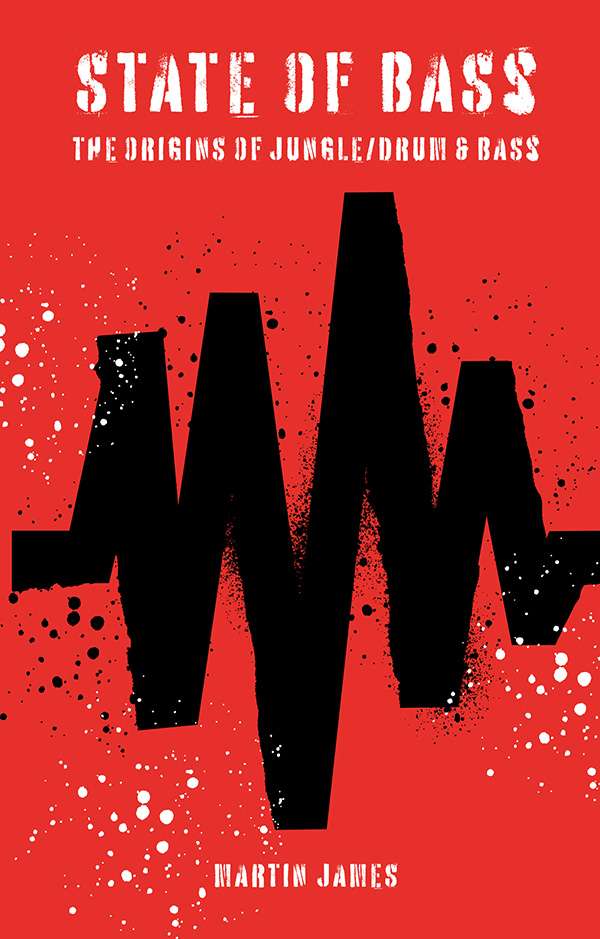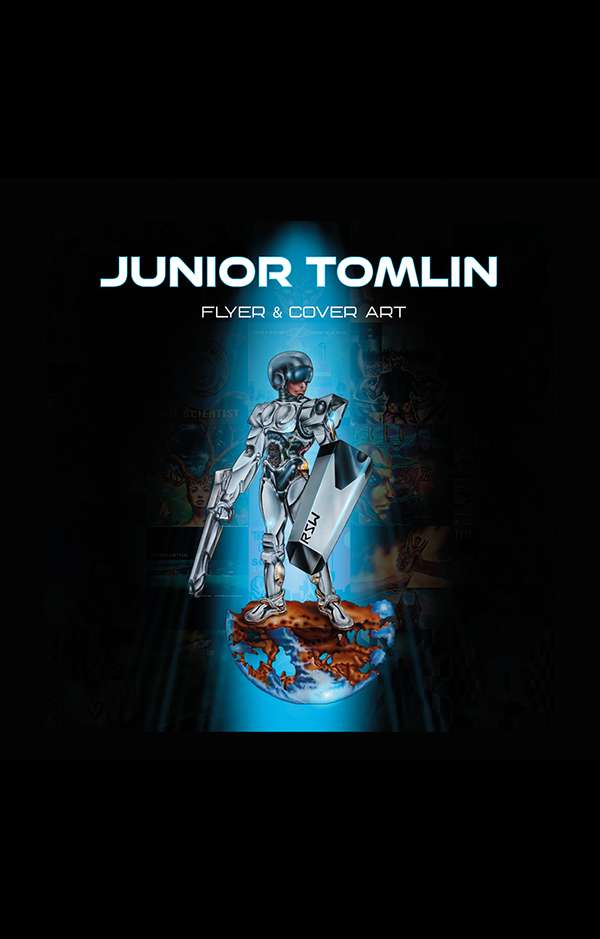Over its tenure, Knowledge Magazine defined a generation of rave, especially when it came to jungle and drum and bass, chronicling the burgeoning genre pretty much from its inception. Popularly known as Kmag, the monthly publication took us from paper to digital and from hardcore to crossbreed, leaving a major gap when it more or less dissolved in 2014.
That gap was filled somewhat last year when Kmag co-founder Colin Steven put together the gorgeous hard copy retrospective, 5 Years of Knowledge. The book published in December 2019 and is full of full-color photography from 25 years of bass with multiple sections written by multiple authors about the different aspects of drum and bass culture. It tells a great story about the timeline of D&B but Steven felt there was more to tell.
Velocity Press was established before the Kmag book came out, publishing Join the Future by Matt Anniss in June 2019 as its first official book (if you want to get technical, the seminal-to-the-scene book All Crews: Journeys Through Jungle by Brian Belle-Fortune was the first book published by Steven back in 2004), and it again sought to tell the story of rave. Since then the new rave-specific publishing house has put out more books than Steven expected and continued to gain traction with a re-release of yet another genre-defining book of State of Bass by Martin James and lots of other interesting new titles. It may have changed forms with Velocity Press, but consider the Kmag gap filled.
With three new books either out or due out in the winter season and rave fans more apt than ever to hunker down with a good tome in the face of COVID, it seemed high time to check in with Steven, get his thoughts about what Velocity Press (RTA: VP) has done this year and find out more about where this unique publisher plans to go in the future. More quality reading ahead.
Most fans know you have a background in publishing and the music industry between Kmag and the legendary All Crews book 2004, but what was the impetus behind starting a full-on publishing house?
After the demise of Knowledge Magazine in 2014, I had no connection to the music industry for the first time in over 20 years. Well, apart from still selling All Crews that is, but even that was minimal – I didn’t actively promote it, I just mailed out the orders! I was working full-time in IT, earning good money but felt unfulfilled. I really missed being self-employed and working in music, especially publishing. So after a few years, I was looking for a way back in. I’d noticed that All Crews was still selling well even without any promotion, so it made sense with my skills, contacts and experience to start a book publishing company. I also thought there was a gap in the market for a book publisher specializing in electronic music and club culture.
How has the transition been from running a magazine to publishing books?
The transition has been smooth as it’s very similar. You deal with a printer and distributors in the same way but only one writer each book instead of over 20 an issue, which is good as it was a pain constantly chasing writers for copy! Not having to sell adverts is also good but my former business partner did that for Kmag anyway, so it’s not something I had to do. She also did all the marketing and social media, so I’ve had to take that on too now, but I enjoy that side of things.
What’s something that’s happened since taking on that endeavor that you didn’t expect?
Obviously, I didn’t expect COVID-19 to happen, and it’s been a challenge dealing with that in our first year. Not being able to do any book launch events has been frustrating as I love traveling, getting to know the author and meeting fellow music fans. Book shops being closed has also affected sales but I have experience designing e-commerce websites and fortunately, people have been buying directly from us instead That has helped enormously. Compared to some businesses I’ve been very lucky, though.
Obviously the Kmag retrospective had something to do with setting up VP when you did, but talk about your first new book, Join the Future. Did you start with that one to “start from the beginning,” so to speak, in terms of the rave timeline?
For Join The Future by Matt Anniss. I wanted our first book to be original and bring a fresh perspective to the acid house inception story. It’s the previously untold story of British dance music’s first sub-bass revolution, tracing the origins, development, impact and influence of bleep techno, and the subsequent musical styles it inspired, on UK club culture.
 What went behind the decision to re-publish the second book, State of Bass?
What went behind the decision to re-publish the second book, State of Bass?
With State Of Bass by Martin James, I wanted to publish four books in 2020 and so needed another title quickly and doing a reissue of this classic on the origins of jungle and drum & bass made sense. It was originally published in 1997 and was out of print within a year, but it’s still relevant. I also don’t like being pigeonholed. The majority of our books will be new, but I still want to do occasional reissues. I’ve actually just signed another reissue for 2021, all I can say at this stage is that it will be our first fiction book.
![]() To that end, it appears that all the titles published so far with VP are here to give ravers a bit of a history lesson, or maybe a walk down memory lane. Has it been important for you that there’s some sort of linear element in tying electronic music’s origins and evolution to the present scene, or is it purely just that you liked the books?
To that end, it appears that all the titles published so far with VP are here to give ravers a bit of a history lesson, or maybe a walk down memory lane. Has it been important for you that there’s some sort of linear element in tying electronic music’s origins and evolution to the present scene, or is it purely just that you liked the books?
Yes, the historical side of things is important. It’s been over 30 years since acid house first exploded here in the UK and people now appreciate what an important cultural moment it was. It’s vital that we document dance music culture whether it’s writing books or blogging, podcasting, making documentary films, taking photos or creating fanzines. There are so many interesting stories that either haven’t been told, airbrushed out of the dominant narrative or simply overlooked. If we don’t document them now then they will be lost.
It’s good as there are two audiences for these kinds of books. Those who were clubbing in the 90s are now in middle-aged and most won’t go out anymore but they’re still interested in the culture and like to reminisce. Then there is the new generation of clubbers who are curious about how things have come to be, and it’s interesting to them, especially as from a technological perspective things have changed so much.
Having said all that, I don’t want to be known for just publishing historical books, I also want to do books on contemporary sounds and styles. Most of what I publish comes down to the ideas that potential writers present to me, though.
How did the idea to do the Junior Tomlin Flyer & Cover Art book come about? It seemed like a really cool way to document that important part of rave culture.
I did an interview with legendary flyer designer Pez for the Kmag 25th anniversary book and asked him about peers he rated, and he mentioned Junior Tomlin. I remembered his art from buying Renegade Soundwave sleeves in my youth and then realized what an amazing amount of great sleeves and flyers he’d designed. So I Googled his name, contacted him via his website and told him and I wanted to do a book with him. His answer was funny, he just said: “Finally!”
Flyer & Cover Art, a comprehensive insight into Junior Tomlin’s incredible back cataloger. Junior’s visionary capabilities led to a long-running career as a flyer and record cover artist. His fantastical projections of the future and often surreal imagery earned him the title ‘The Salvador Dali of Rave.” Tomlin’s iconic work was highly sought after, with ravers collecting his remarkable work and promoters queuing up to commission him to produce imagery for their flyers.
Bedroom Beats and B-Sides may surprise some UK and European ravers in that it contains hip hop in its timeline and sees it as very much part of the fabric of electronic music. What do you think EDM fans can potentially learn from this book along that vein?
The full title of the book is a bit of a mouthful but here goes: Bedroom Beats and B-Sides: Instrumental Hip Hop and Electronic Music at the Turn of the Century. As should hopefully be clear from the title, the book is about instrumental music. More specifically, it’s what author Laurent Fintoni terms beat culture, which is used to try and capture the murky grounds between hip-hop and electronic music that have defined both genres. From trip-hop, jungle, illbient, and IDM in the 1990s to just “beats” in the late 2000s, the book explores how these scenes acted as incubators for new ideas about composition and performance that are now taken for granted.
It’s great to see you got a second book out of The Secret DJ. The first book was definitely begging him to continue the journey up until present time. What do you like about his perspective and, other than a whole lot of laughs, what do you think fans and aspiring DJs will get out of this tale?
I like how he just tells it like it is; the benefits of anonymity I suppose. Book Two is less of a personal memoir. This time the Secret DJ uses the experience/lessons of four decades immersed in dance music and club culture to explore what happened to the acid house dream: how did a utopian youth movement become an “industry” riddled with predatory behavior, parasitic middlemen, racism, sexism, exploitation, impostors and naked greed? It’s brutally honest and often controversial but crucially (I hope) has all the pathos and humor that made the first one work.
 Synth nuts are going to love Synthesizer Evolution, especially with its almost encyclopedic breakdown of every synth in history. How did you come to find this author and book?
Synth nuts are going to love Synthesizer Evolution, especially with its almost encyclopedic breakdown of every synth in history. How did you come to find this author and book?
For our first three titles, I actually sourced them myself, but now people know what Velocity Press is about I’m getting potential authors approaching me with ideas and that is what happened with Synthesizer Evolution. As I said, I only planned on publishing four books this year, but Oli Freke’s pitch was so good that I just had to squeeze it into this year’s release schedule. Each featured synth, sampler and drum machine is illustrated by hand and shown alongside its vital statistics and some fascinatingly quirky facts.
Are there any previews you can give us for what’s coming up next at VP? What is your vision for the company going forward?
Yes, we’re going to announce our next title in January. It’s called Who Say Reload: The Stories Behind the Classic Drum & Bass Records of the 90s. As well as Paul Terzulli’s stories it will also include Eddie Otchere’s photographs. Eddie is one of the main photographers who documented the UK’s jungle scene in the 90s and has an incredible archive. Naturally, it’s going to be more of a high-end coffee table type of book.
After that, we’re publishing a book by a writer called Harold Heath called Long Relationships: My Incredible Journey From Unknown DJ To Small-time DJ. It tells a story that will be familiar to every DJ who never quite made it and anyone who spent their teenage years on the dance floor. It is self-deprecating, honest, authentic, funny, but also deadly serious when it comes to DJing. As previously mentioned, I’ve also got our first fiction title coming next summer, and I’m very excited about that. There will also be a practical book on how to set up and run a digital record label so a diverse range. Ultimately, the aim is to is create a catalog that feels like a trusted record label in its integrity and vision and deliver exciting stories to serious electronic music fans who enjoy good literature.
All of the Velocity Press books can be purchased on their website, with most being available in eBook and physical copy formats.
This article was first published on Your EDM. Source: Your EDM Interview: The Spirit of Kmag Rolls on With ‘Velocity’
from EDM News – Your EDM https://ift.tt/3as0NG1

SUBSCRIBE TO YOUREDM CHANNEL TODAY.
YOUR EDM provides the inside scoop on the EDM industry.
Subscribe and go DEEP inside the electronic scene.
SPONSORS
Sourced by actual house heads who have supported the EDM scene, music, culture, and vibe collectively for decades Always dedicated to showing love and support for the fellow artists, promoters, and supporters.

ConversionConversion EmoticonEmoticon